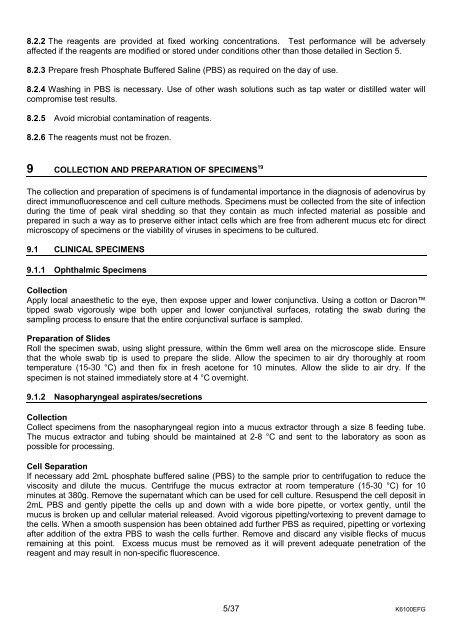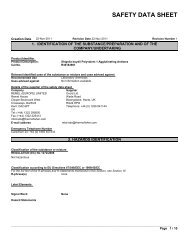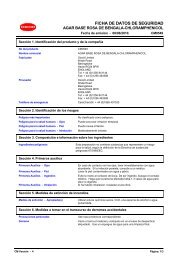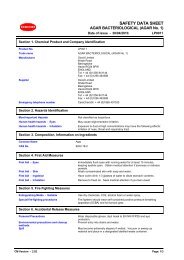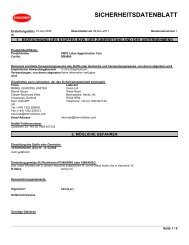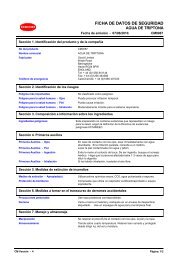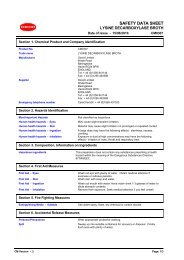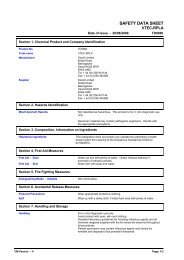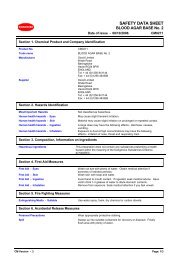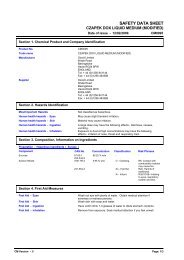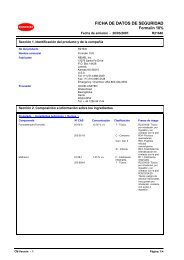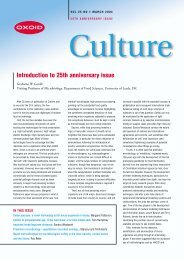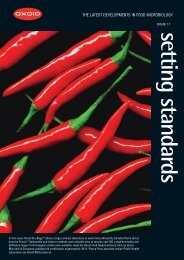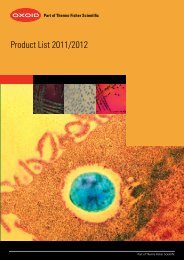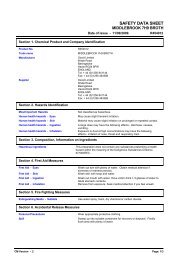IMAGEN™ Adenovirus - Oxoid
IMAGEN™ Adenovirus - Oxoid
IMAGEN™ Adenovirus - Oxoid
Create successful ePaper yourself
Turn your PDF publications into a flip-book with our unique Google optimized e-Paper software.
8.2.2 The reagents are provided at fixed working concentrations. Test performance will be adversely<br />
affected if the reagents are modified or stored under conditions other than those detailed in Section 5.<br />
8.2.3 Prepare fresh Phosphate Buffered Saline (PBS) as required on the day of use.<br />
8.2.4 Washing in PBS is necessary. Use of other wash solutions such as tap water or distilled water will<br />
compromise test results.<br />
8.2.5 Avoid microbial contamination of reagents.<br />
8.2.6 The reagents must not be frozen.<br />
9 COLLECTION AND PREPARATION OF SPEClMENS 19<br />
The collection and preparation of specimens is of fundamental importance in the diagnosis of adenovirus by<br />
direct immunofluorescence and cell culture methods. Specimens must be collected from the site of infection<br />
during the time of peak viral shedding so that they contain as much infected material as possible and<br />
prepared in such a way as to preserve either intact cells which are free from adherent mucus etc for direct<br />
microscopy of specimens or the viability of viruses in specimens to be cultured.<br />
9.1 CLINICAL SPECIMENS<br />
9.1.1 Ophthalmic Specimens<br />
Collection<br />
Apply local anaesthetic to the eye, then expose upper and lower conjunctiva. Using a cotton or Dacron<br />
tipped swab vigorously wipe both upper and lower conjunctival surfaces, rotating the swab during the<br />
sampling process to ensure that the entire conjunctival surface is sampled.<br />
Preparation of Slides<br />
Roll the specimen swab, using slight pressure, within the 6mm well area on the microscope slide. Ensure<br />
that the whole swab tip is used to prepare the slide. Allow the specimen to air dry thoroughly at room<br />
temperature (15-30 °C) and then fix in fresh acetone for 10 minutes. Allow the slide to air dry. If the<br />
specimen is not stained immediately store at 4 °C overnight.<br />
9.1.2 Nasopharyngeal aspirates/secretions<br />
Collection<br />
Collect specimens from the nasopharyngeal region into a mucus extractor through a size 8 feeding tube.<br />
The mucus extractor and tubing should be maintained at 2-8 °C and sent to the laboratory as soon as<br />
possible for processing.<br />
Cell Separation<br />
If necessary add 2mL phosphate buffered saline (PBS) to the sample prior to centrifugation to reduce the<br />
viscosity and dilute the mucus. Centrifuge the mucus extractor at room temperature (15-30 °C) for 10<br />
minutes at 380g. Remove the supernatant which can be used for cell culture. Resuspend the cell deposit in<br />
2mL PBS and gently pipette the cells up and down with a wide bore pipette, or vortex gently, until the<br />
mucus is broken up and cellular material released. Avoid vigorous pipetting/vortexing to prevent damage to<br />
the cells. When a smooth suspension has been obtained add further PBS as required, pipetting or vortexing<br />
after addition of the extra PBS to wash the cells further. Remove and discard any visible flecks of mucus<br />
remaining at this point. Excess mucus must be removed as it will prevent adequate penetration of the<br />
reagent and may result in non-specific fluorescence.<br />
5/37 K6100EFG


